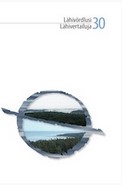Author(s): Allan Puur,Leen Rahnu,Jaak Valge / Language(s): Estonian
Issue: 04/2016
The article addresses the influences of migration on the size of the major language groups in Estonia, the linguistic composition of the population, and the use of Estonian as a second language from the end of the 1980s to 2011, based on the last three censuses. As for different language groups, demographic and linguistic change has affected them to a different extent. The most marked decrease can be observed in smaller language groups, which is due to language shift. In Estonia the language changed to by minor language groups is mostly Russian, and this process has not ceased since the restoration of Estonian statehood. The reasons for this change date back to the Soviet period or sometimes even earlier. The Estonian competence of the population has notably increased during reindependence. This has mainly happened due to changes in politics and in the rise of the status of the Estonian language, even considering the reflection of emigration and of changes in census methodology in the census data on Estonian competence. The most notable increase in Estonian competence concerns the youth. Estonian competence strongly depends on the ethnic composition of the area of living, whereas its dependence on the generation of immigrants is relatively low. The effect of the language environment on the Estonian competence in immigrants has not weakened, but rather strengthened since the end of the 1980s. Also, association has strengthened between language competence and level of education. According to projection calculations the native Estonian-speaking population will decrease by a fifth, at best, by the end of the 21st century. However, it is possible that the replacement of generations will bring the proportion of total non-speakers of Estonian down to 7% by the same time. From the standpoint of methodology the article emphasises that censuses are a very important source of information on the dynamics of language situations. There is actually no other way to the full picture of language change. Although Estonian linguists have made an active use of census data, the analytic potential of the data in studying language practices has hardly been used in full. Unfortunately, there is an imminent danger that the decades-long series of comprehensive language data may be interrupted in Estonia by the very next census. This is because Statistics Estonia has proclaimed a course to purely register-based censuses, with very limited language data available in registers. Thus, the next few years will probably bring a debate on the future of censuses in Estonia, where linguists have an important say.
More...

